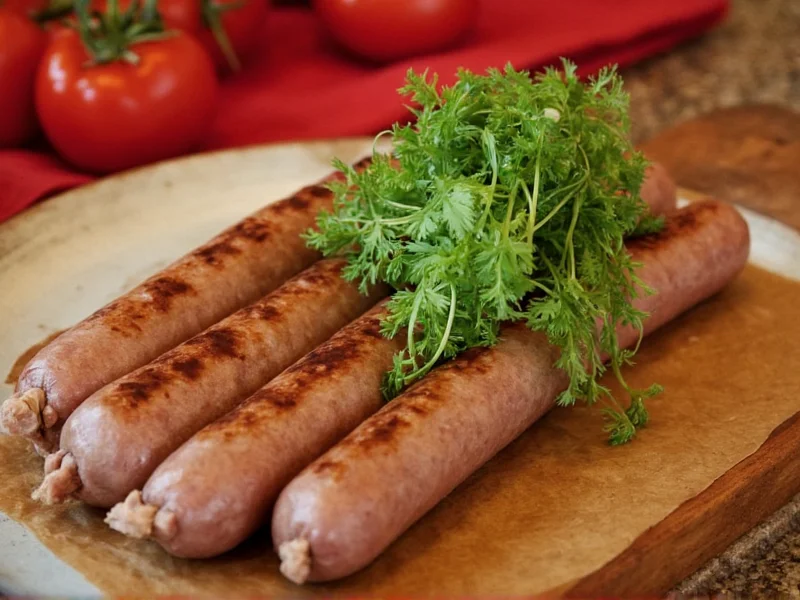For centuries, resourceful cooks across Europe have incorporated wild plants like stinging nettles into meat preparations as both a nutritional booster and flavor enhancer. Nettle sausage represents a perfect marriage of foraged ingredients and traditional meat preservation techniques, creating a dish that's both historically significant and nutritionally impressive.
The Historical Significance of Nettle Sausage
Nettle sausage has deep roots in European culinary traditions, particularly in regions where wild plants supplemented limited food resources. During spring when fresh greens were scarce but nettles grew abundantly, resourceful cooks discovered that these "stinging" plants could be transformed into valuable food sources when properly prepared. Historical records from medieval Europe document nettle usage in various meat preparations, with sausage being a particularly effective method for preserving both meat and greens through the winter months.
In Scandinavian countries, nettle sausage was traditionally prepared during spring nettle harvests as a way to capture seasonal nutrients. British culinary history includes "nettle pudding" recipes that evolved into sausage forms, while Alpine regions of Europe developed distinctive nettle-infused sausages that remain part of local cuisine today. These historical preparations weren't merely practical—they represented sophisticated food preservation knowledge that maximized available resources.
Why Nettles Work Well in Sausage
The unique properties of stinging nettles make them particularly well-suited for sausage making. When cooked, nettles lose their stinging hairs and develop a rich green color and distinctive flavor that complements pork, beef, or game meats. Their fibrous structure helps bind sausage mixtures while adding moisture retention properties that prevent dryness during cooking.
| Nutrient | Per 100g Cooked Nettles | Benefit in Sausage Preparation |
|---|---|---|
| Iron | 1.6mg (9% DV) | Enhances nutritional profile of meat products |
| Vitamin A | 4000 IU (80% DV) | Natural coloring agent and antioxidant |
| Vitamin C | 30mg (50% DV) | Natural preservative that aids in meat preservation |
| Calcium | 300mg (30% DV) | Strengthens texture and provides mineral balance |
| Dietary Fiber | 2.5g | Improves binding properties and adds texture complexity |
Safe Preparation of Stinging Nettles for Sausage Making
Proper nettle preparation is essential for creating safe, enjoyable nettle sausage. The stinging hairs contain formic acid and other compounds that cause skin irritation but are completely neutralized through heat processing. Follow these steps for safe nettle incorporation:
- Harvesting: Collect young nettle tops in early spring (wear gloves) before the plant flowers for the most tender leaves
- Cleaning: Rinse thoroughly in cold water to remove debris and insects
- Blanching: Submerge in boiling water for 2-3 minutes until leaves turn bright green and lose stiffness
- Draining: Immediately transfer to ice water, then squeeze out excess moisture (wear gloves during this step too)
- Chopping: Finely chop the blanched nettles for even distribution in the sausage mixture
Never attempt to use raw nettles in sausage preparation, as the stinging compounds won't be adequately neutralized during the relatively brief cooking of sausage. The blanching step is non-negotiable for both safety and optimal texture.
Traditional Nettle Sausage Recipe Framework
While regional variations exist, most traditional nettle sausage recipes follow this basic framework that yields approximately 2 pounds of fresh sausage:
- 1.5 lbs ground pork (shoulder works best for fat content)
- 0.5 lbs ground veal or beef (for complexity)
- 1 cup finely chopped blanched nettles (well-drained)
- 2 cloves garlic, minced
- 1 small onion, finely diced and sautéed
- 1 tsp salt
- 0.5 tsp black pepper
- 0.25 tsp nutmeg
- 0.25 cup breadcrumbs or cooked rice (as binder)
- Natural sausage casings or preparation for patties
Mix all ingredients thoroughly but gently (overmixing damages texture), then either stuff into casings or form into patties. Refrigerate for at least 4 hours before cooking to allow flavors to meld. Cook nettle sausage to an internal temperature of 160°F (71°C) for safety.
Variations Across Culinary Traditions
Different regions have developed distinctive approaches to nettle sausage that reflect local ingredients and preferences:
- Scandinavian style: Incorporates juniper berries and allspice with a higher nettle-to-meat ratio (up to 40% nettles)
- Alpine tradition: Features smoked nettle sausage with caraway seeds and a small amount of dried mushrooms for umami
- British interpretation: Often prepared as a nettle and pork loaf rather than traditional sausage links
- Modern adaptations: Include nettle-infused breakfast sausages with apple and sage, or game meat nettle sausages using venison or boar
Foraging enthusiasts should note that nettle identification is crucial—never harvest plants near roadsides or potentially contaminated areas. Proper identification ensures you're collecting Urtica dioica and not similar-looking plants that may be toxic.
Storage and Serving Recommendations
Nettle sausage can be stored using standard sausage preservation methods. Fresh nettle sausage keeps for 3-4 days refrigerated or up to 3 months frozen. For longer storage, traditional smoking or curing methods work well, though the green color will darken during these processes.
Serve nettle sausage with complementary flavors that enhance its earthy notes: roasted root vegetables, apple sauce, mustard with herbs, or a simple pan gravy. The distinctive green flecks visible in freshly cooked nettle sausage make it an attractive presentation piece for those interested in wild food cuisine.
Common Questions About Nettle Sausage
Many people exploring this traditional preparation have similar questions about preparation, safety, and culinary applications. Understanding these aspects helps ensure successful incorporation of this historical ingredient into modern cooking practices.











 浙公网安备
33010002000092号
浙公网安备
33010002000092号 浙B2-20120091-4
浙B2-20120091-4